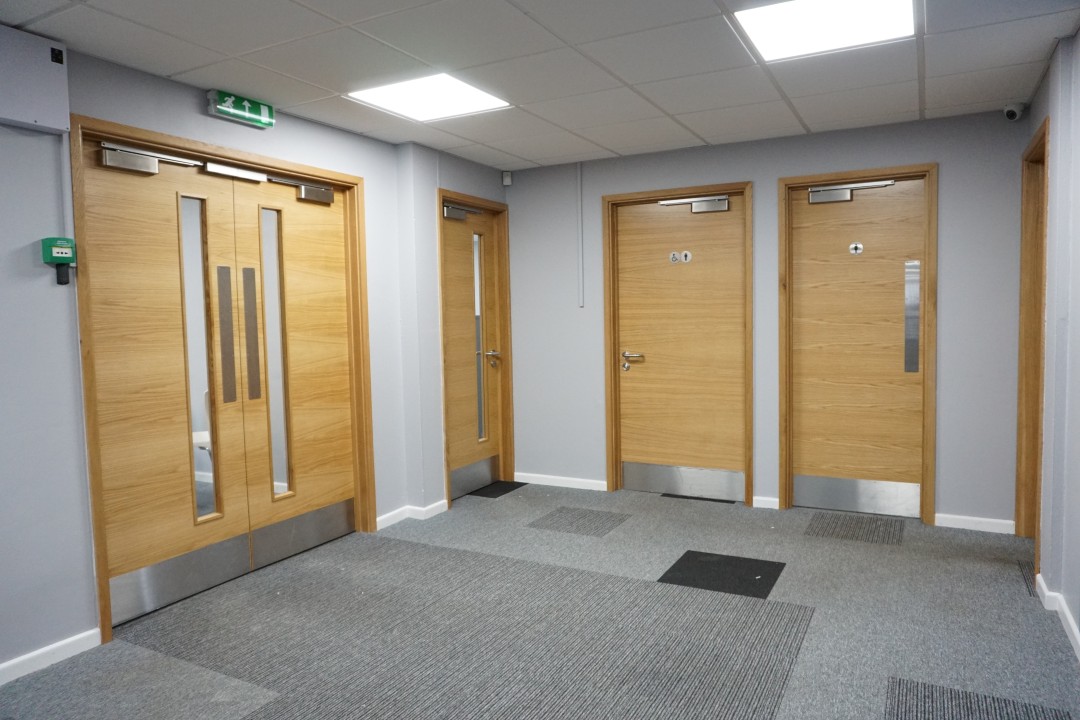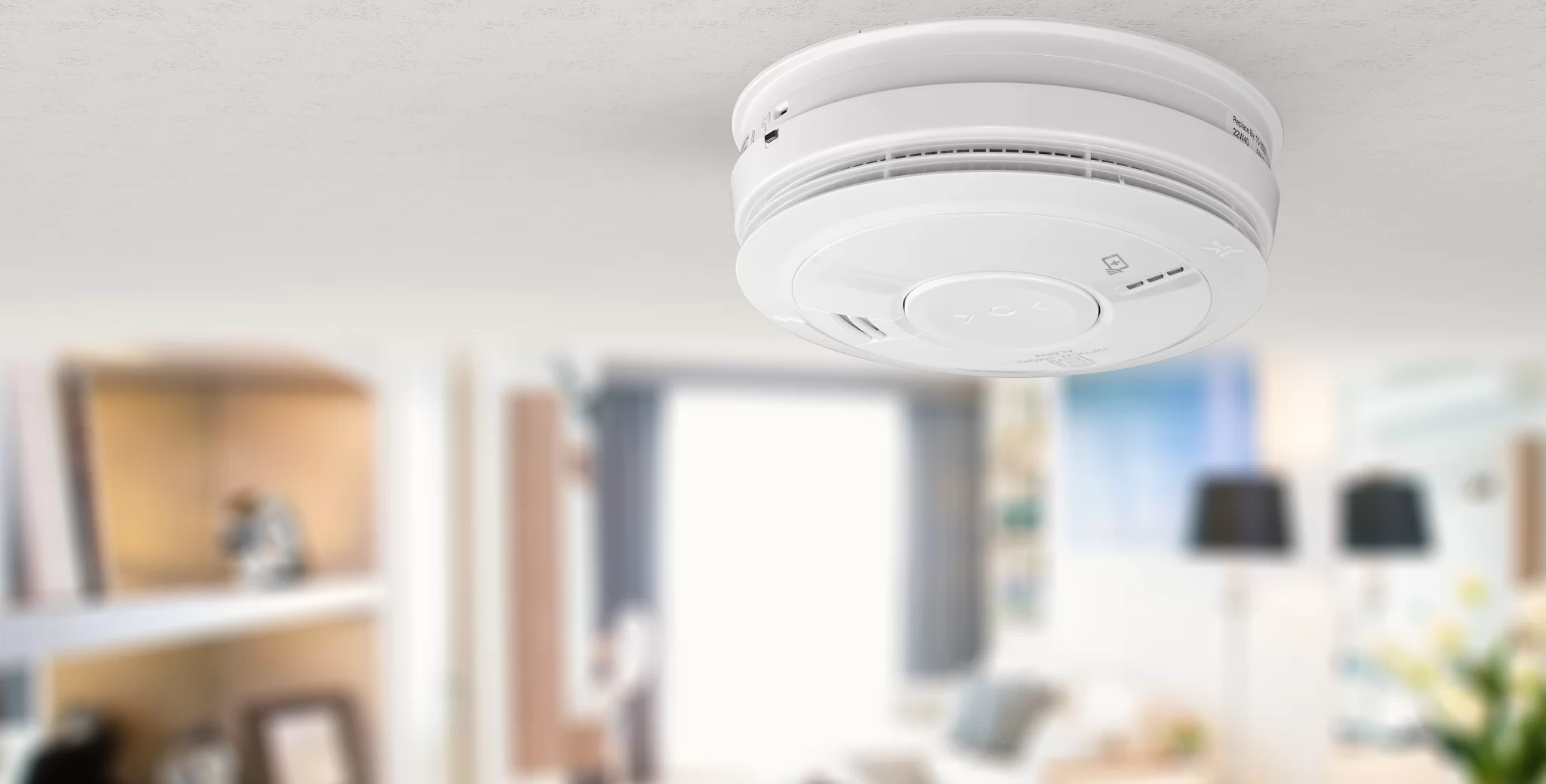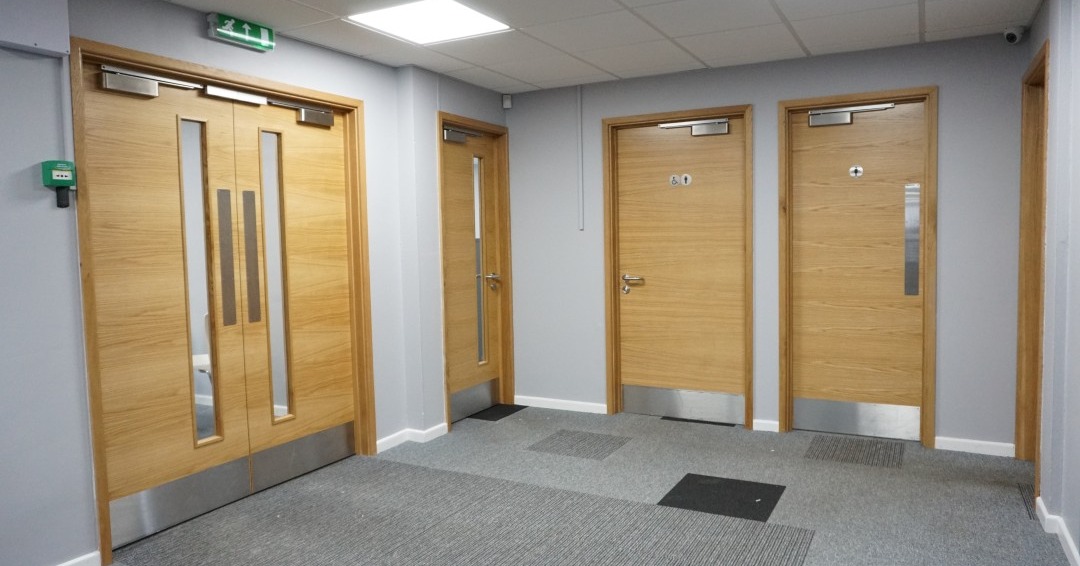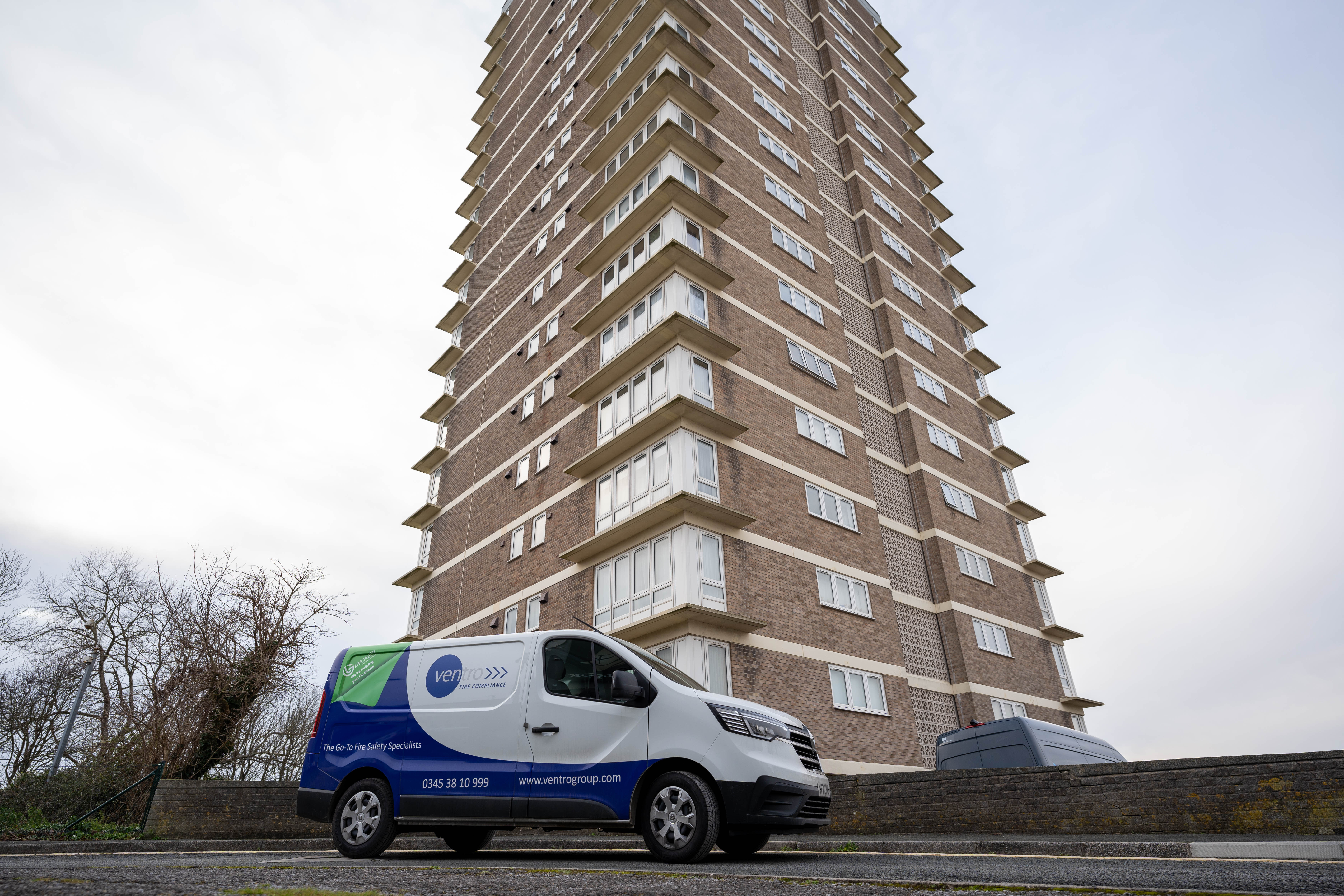Waste Storage Solutions: An Often-Overlooked Aspect Of Fire Safety

When considering fire safety, certain aspects tend to dominate our attention - smoke alarms, fire extinguishers, emergency exits, compartmentation and fire-resistant materials. Yet, there's an essential component that often gets relegated to the shadows: bin stores. These seemingly mundane spaces can play a crucial role in fire safety, prevention, and containment, making them an often-overlooked aspect of fire safety in various environments.
The Hidden Risks
Bin stores might not immediately come to mind when thinking about fire hazards, but they accommodate several hidden risks that make them a potential breeding ground for disaster. Accumulated waste material, particularly if not disposed of properly, can become highly flammable. Items like paper, cardboard, and packaging materials are common inhabitants of bins, and when ignited, they can fuel a fire and cause it to spread rapidly.
A key factor that contributes to the fire risk of bin stores is the presence of ignition sources. These sources can range from discarded cigarette butts to faulty electrical equipment. Even a small spark in the vicinity of accumulated waste can lead to a fire outbreak that might quickly escalate out of control. Therefore, considering ignition sources and taking steps to minimise them in and around bin storage areas is paramount.
Bin stores are often neglected when it comes to regular maintenance and upkeep. They might be tucked away in corners or basements, out of sight and, consequently, out of mind. This neglect can lead to issues like damaged or malfunctioning lighting, obstructed exits, and even faulty fire prevention equipment like sprinklers or fire alarms. If a fire were to break out, these overlooked maintenance issues could impede quick response and exacerbate the situation.
Types of Bin Stores
Bin Stores
Designed to accommodate various bin sizes, these units promote proper use, lower waste expenses, and can be conveniently installed in accessible areas. Bin Stores offer a secure solution for placing bins at a safe distance from dwellings. In cases where the recommended six metre distance isn’t feasible due to site limitations, risk can be mitigated by employing cladding materials with BS476-tested 30-minute fire resistance.
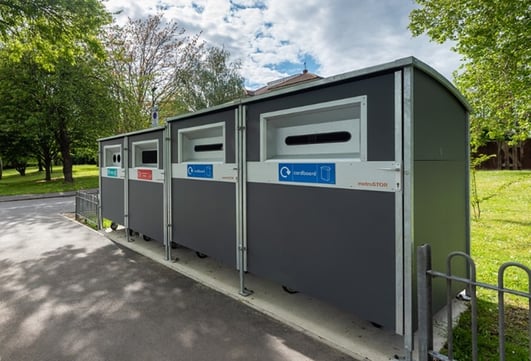
Recycling Hubs
The Recycling Hub addresses a significant hurdle in achieving local authorities’ 50% household waste collection target. Flatted accommodations hinder progress, with estate recycling rates averaging just 10%, compared to the national 44% average. Refuse chutes and inaccessible recycling facilities contribute to this challenge. Likewise, on-street properties with bag-collection policies struggle due to limited wheelie bin storage. We strongly advocate communal street bins, and our seasoned consultants specialise in designing successful recycling facilities that empower residents to recycle effectively.
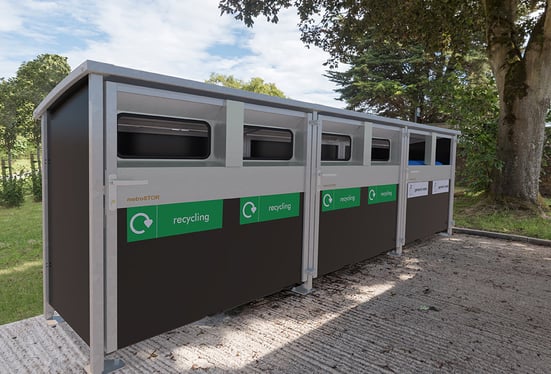
Food Waste Bin Housing
Food Waste Bin Housings are designed to help local authorities prioritise the separate collection of food waste for multi-family properties where individual waste caddies are not a practical option. A common drawback associated with food waste bins is the requirement to handle food waste bin lids, which can discourage use.
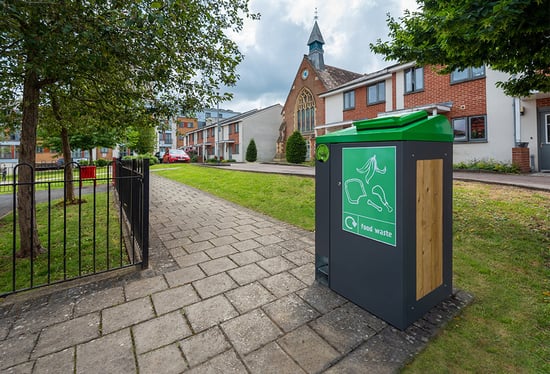
What are the guidelines surrounding Bin Stores
In order to mitigate the risk of waste and recycling bin fires, leading fire prevention entities like the FPA and CFPA-E advise against placing bins within a six-meter radius of any building aperture, including doors, windows, ventilation ducts, as well as uncovered soffits and fascia. If adhering to this safety distance is not viable, the guidelines propose storing the bins within a structure designed to withstand fire for at least 30 minutes. Moreover, it is recommended to firmly anchor the bins in position to prevent them from being shifted closer to the building.
Benefits of Effective Waste Storage Solutions
Reducing Fire Risks
paper, cardboard, and larger items, being highly flammable, burn intensely and emit harmful fumes, making them susceptible to arson. CPFA-E guidelines suggest placing them at least 6 meters away from openings or within a 30-minute fire-resistant structure when the recommended distance isn't achievable.
Operational Costs
We recognise that disposal of waste is a challenge for people living in flats, we need to make this as easy a process as possible. Any refuse placed outside of the bins costs money in staff time and additional disposal costs. Missed collections due to contamination or over-presentation are very costly and enclosed housings are invaluable where this is an issue. Enclosed housings reduce dispersion by wind or wildlife, deflector plates and apertures reduce spillage and contamination.
Recycling & Sustainability
Providing clear, prominently located information on what can be recycled using colours and symbols is essential, as well as making the process as easy as possible. Help reduce recycling contamination and achieve your recycling targets. We want to help you empower residents to recycle effectively.
Improving Neighbourhoods
Old bin stores are often unsightly and unsafe, encouraging antisocial behaviour and having a very negative visual impact on residents. Attractive deposit points can be put in the most accessible locations, promoting positive social norms around responsible disposal of refuse and recycling.
How we can help
Working alongside our partner metroSTOR, Ventro are able to offer storage solutions for all of your needs, from waste storage, to E-Scooter storage. This often overlooked aspect of fire safety is essential to keep your residents safe as well as improve neighbourhoods and communities. If you would like to speak to one of our consultants then please reach out below.
Sign up for fire safety updates
You'll receive all the latest news and blogs straight to your inbox.


